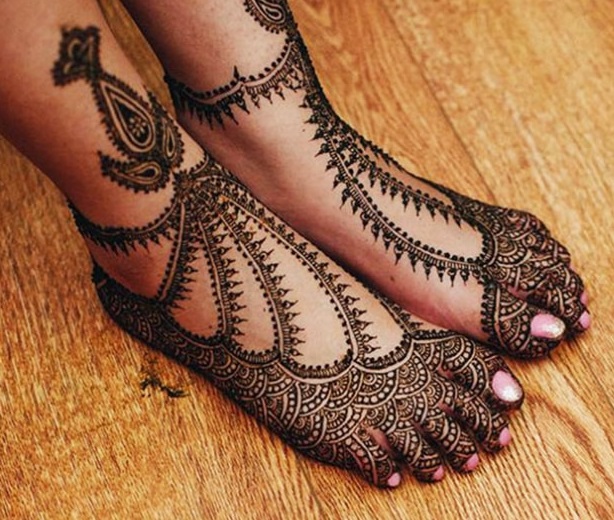FWP:
For background see S. R. Faruqi's choices. For more on Ghalib's unpublished verses, see the discussion in {4,8x}.
On the literary use of bāñdhnā as 'to versify', see {108,1}. For more on henna, see {18,4}.
Gyan Chand speaks of downheartedness as afsurdah-dilī , which of course is what comes naturally. Why the awkwardly pluralized abstraction, afsurdah-dilī-hā ? 'Downheartednesses' is as cumbersome in Urdu as it is in English. Yet Ghalib is fond of such pluralized abstractions: for more about them see {1,2}. Sometimes they do seem pretty much unmotivated.
In this case, we could consider that there are different kinds of beautiful (?) effects that downheartedness can have, and thus in a sense different kinds of downheartedness. Here are some:
=A hennaed foot makes one reluctant to walk much at all, and that's how a melancholy person feels.
=A hennaed foot causes one to walk slowly and haltingly, and that's how a melancholy person walks.
=A hennaed foot is decorated in fancy and variegated patterns, and melancholy shows itself in a variety of different forms.
=A hennaed foot looks as though it has blood on it, and the feet of the melancholy person may be (literally or metaphorically) blood-stained from wandering in thorny deserts
=Ardor is metaphorically 'bound' by being incorporated into a verse, and literally 'bound' because its hennaed feet make it unable to walk properly
No matter how we slice and dice it, though, there remains the limiting and radical dissimilarity: a hennaed foot is a characteristic of the beautiful beloved's, while ardor or yearning is a characteristic of the passionate lover's. Thus the metaphorical possibilities run into an abrupt and substantial barrier that prevents their going deep enough to be truly fascinating. Maybe that's one reason Ghalib chose not to include this verse in the published divan.

Zamin:
That is, we are of such a colorful temperament that we call extinguished ardor 'a henna-ed foot', and thus create colorfulness out of down-heartedness. What a good verse it was, that he did not include in the divan!
== Zamin, p. 243